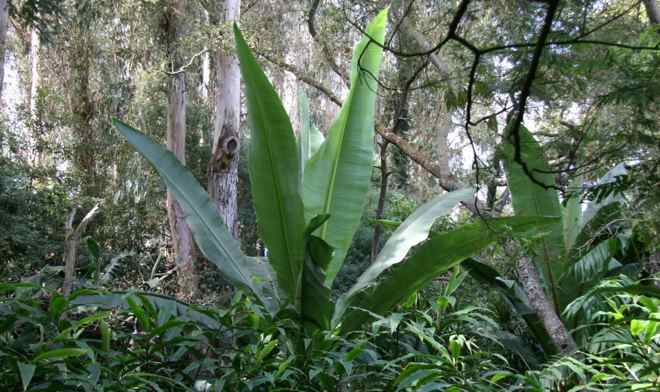Enset is a plant native to Ethiopia that is often referred to as the false banana because, not surprisingly, of its resemblance to the banana plant. It is grown in the less arid highlands of the southwestern region of Ethiopia. Enset contributes to improved food security for approximately 15 million Ethiopians and, according to Ethiopian researchers, there is potential for expanding consumption of the crop. Over the coming weeks, Food Tank will feature different ways in which the enset plant has significant environmental, social, and economic benefits for farmers and consumers.
Enset (Ensete ventricosum) is a productive, multipurpose crop that has been domesticated for approximately 10,000 years, and provides nourishment for approximately 10 million people. Among its many purposes, enset has been used as a tool to preserve soil health in Ethiopia for thousands of years.
But because of the public lack of familiarity with enset, Dr. Ken Wilson, Executive Director of the Christensen Fund, a private foundation that supports initiatives promoting biodiversity and cultural and environmental sustainability, notes that, “Enset has been neglected and inadvertently discriminated against in favor of the less-productive cereals promoted by agricultural extension services and the aid community in Ethiopia.” Unfortunately, cultivation of cereal crops can lead to a reduction in soil fertility and with that, soil erosion, making land non-arable without the use of agrochemicals. Soil erosion, however, doesn’t typically occur in fields where enset is grown. The enset plant is very effective at absorbing and storing nutrients, and producing large amounts of organic matter that serve as mulch for the soil.
In the Gamo Highlands of Ethiopia, farmers grow enset, along with raising cattle. First, sheep and cattle graze the Alpine meadows. Then, these nutrients are concentrated in the manure, which in turn is applied to the enset plots, while many other nutrients, including food waste and ashes, are also composted to supply nutrients. When enset is harvested, it provides not only food, but fodder for livestock, clothing materials, and building materials. And because the enset fields accumulate nutrients, the soil is more fertile and better structured than before the crop was planted. This effect is amplified when enset is intercropped with other plants. For example, farmers plant their coffee bushes interspersed with enset, which provides nutrients and shading.
Organizations around the globe, including the U.N. Food and Agricultural Organization (FAO), Globally Important Agricultural Heritage Systems (GIAHS), and U.N. Educational, Scientific, and Cultural Organization (UNESCO), are looking for multiple approaches to intensify the sustainability of agricultural landscapes by researching and understanding indigenous and traditional agricultural knowledge. More research can help farmers, development agencies, agricultural institutions, and the funding and donor communities realize the full nutritional, environmental, and economic potential of growing enset.













